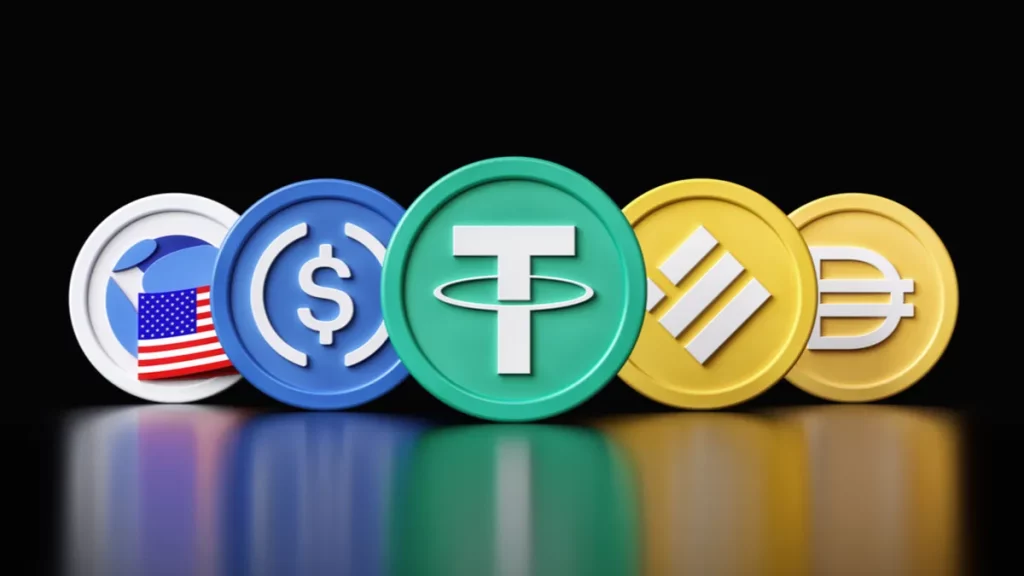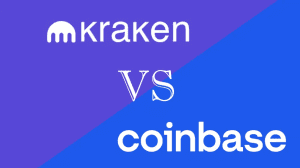An Introduction To Stablecoins – Everything Explained

Stablecoins have become increasingly popular in the world of cryptocurrency over the years, offering a more stable alternative to volatile digital currencies like Bitcoin and Ethereum. But what exactly are stablecoins, how do they work, why are they so important, and what are the most popular ones? This article explains everything you need to know using simple, plain English – no technical jargon.
The Quick Stablecoins Guide
Get the main points throughout this article:
- Stablecoins are designed to have a stable financial value.
- They are mostly pegged to a fiat currency, like the US dollar.
- Some benefits include stability, transparency, efficiency, accessibility, and decentralization.
- There are several types of stablecoins: Collateralized, Algorithmic, Hybrid, and more.
- The most popular tokens are Tether, USD Coin, Binance USD, Dai, and TrueUSD.
What Are Stablecoins? Why Are They Important?
Stablecoins are cryptocurrencies that aim to maintain a stable value, where they’re typically pegged to a fiat currency like the US dollar. This stability is available through various mechanisms, including collateralization, algorithmic trading, and centralized reserves.
Moreover, stablecoins have several benefits over traditional cryptocurrencies like Bitcoin or Ethereum. For one, they offer a more stable store of value, making them more attractive for those hesitant to invest in volatile cryptos. Furthermore, they can be helpful for various purposes, such as a medium of exchange, a store of value, and even a way to earn interest through staking.
As a result, this pegged form of tokens is becoming an essential part of the crypto ecosystem, offering plenty of value and benefits.
Stability
The primary reason why a stablecoin is important is its stability. Unlike traditional cryptocurrencies like Bitcoin and Ethereum, it offers a stable value. Therefore, it’s a more reliable store of value and medium of exchange. You can use it for various purposes, including remittances, cross-border payments, and even as a hedge against market volatility.
Accessibility
Stablecoins also make it easier for people to enter the cryptocurrency ecosystem. Many people hesitate to invest in traditional cryptocurrencies due to their volatility. Meanwhile, stablecoins are an accessible and stable alternative for beginner cryptocurrency traders who prefer a more conservative investment approach.
Transparency
Another perk is that a reserve of assets, such as fiat currencies or cryptocurrencies often backs a stablecoin. Thus, the issuing company must be transparent about its resources, funds, and auditing processes. So this transparency will help build trust with users and investors, which is essential for the long-term success of stablecoins.
Efficiency
Traders can use stablecoins to make faster and cheaper cross-border payments. Traditional international methods are usually slow and expensive, involving intermediaries and high fees. However, stablecoins offer a faster, more affordable alternative, enabling near-instant transactions with minimal costs.
Decentralization
Some stablecoins, such as algorithmic coins, are fully decentralized, meaning no central authority or company controls them. As a result, they are resistant to censorship and government interference, further enhancing their appeal to users who value privacy and independence.
Drawbacks And Disadvantages
Despite many benefits and advantages, stablecoins are not without a downside – just like any other financial instrument.
- Potential centralization: Many stablecoins are issued and controlled by a single company, which holds the reserves backing the token. And this centralization can lead to issues with transparency, accountability, and potential regulatory concerns.
- Counterparty risk: Collateralized stablecoins carry counterparty risk, meaning if the issuer of the coin becomes insolvent, users risk losing the value of their stablecoin holdings. While some issuers have implemented measures to mitigate this risk, it remains a concern for users and investors.
- Market volatility: Algorithmic or hybrid stablecoins may be subject to market volatility. The algorithms that control these coins may not always respond quickly enough to changes in market demand, leading to potential price fluctuations. While these stablecoins are more stable than traditional cryptocurrencies, they are not entirely immune to market forces.
- Lack of regulation: Stablecoins’ regulatory status remain uncertain, which could make them riskier to use or invest in. Users and investors have little protection in the event of fraud, mismanagement, or market manipulation.
- Limited adoption: While stablecoins have seen significant growth in recent years, their adoption remains limited compared to traditional cryptocurrencies. Many businesses and individuals may not be aware of or may not trust stablecoins, limiting their use and potential impact on the financial system.
Types of Stablecoins
Not every stablecoin is the same. They come in all sorts of shapes and forms, including:
- Collateralized stablecoins: They have the backing of a reserve of assets, such as fiat currencies, commodities, or other cryptocurrencies. The most popular token is Tether (USDT), which is pegged to the US dollar. When a user buys USDT, the issuing company holds the same amount of US dollars in reserve, thus ensuring the stablecoin’s value remains stable.
- Algorithmic stablecoins: This type of token uses a set of algorithms and smart contracts to maintain their stability. These algorithms automatically adjust the supply of the stablecoin in response to changes in demand, buying or selling tokens as necessary to keep the price stable. The most popular algorithmic stablecoin is the USD-pegged Dai (DAI). Its supply adjusts through smart contracts that incentivize users to create or destroy tokens as needed to maintain stability.
- Fiat-collateralized stablecoins: Similar to collateralized stablecoins, these tokens are also backed, but by a specific fiat currency, such as the euro or yen. The most popular digital asset is TrueUSD (TUSD), pegged to the US dollar. When a user buys TUSD, the issuing company holds an equivalent amount of US dollars in reserve.
- Crypto-collateralized stablecoins: Unlike its Fiat-collateralized counterpart, this form of crypto is backed by cryptocurrency reserves, like Ethereum or Bitcoin. Maker (MKR), which is pegged to the US dollar, is the most popular token. When users buy MKR, they deposit Ethereum as collateral, which is then used to create DAI.
- Hybrid stablecoins: They use a combination of collateralization and algorithmic trading to maintain their stability. USD Coin (USDC) is the most popular asset, which is backed by a reserve of US dollars and uses algorithms to maintain stability.
Most Popular Stablecoins
If you prefer stablecoins over traditional cryptocurrencies, then you’re better off with the most-traded assets instead of unknown ones. The top 5 stablecoins are (as of 26 April, 2023):
| NAME | MARKET CAP |
| Tether (USDT) | $81.6 billion |
| USD Coin (USDC) | $30.6 billion |
| Binance USD (BUSD) | $6.3 billion |
| Dai (DAI) | $4.9 billion |
| TrueUSD (TUSD) | $2 billion |
FAQ
How do stablecoins work?
Stablecoins work by pegging their value to a stable asset, such as a fiat currency, commodity, or cryptocurrency. This pegging is usually achieved by maintaining a reserve of the underlying asset or through an algorithmic system that adjusts the supply of the stablecoin based on market demand.
What are the benefits of using a stablecoin?
A stablecoin offers several benefits, including stability, liquidity, and lower transaction fees. You can use it for cross-border payments, remittances, and as a store of value. It also provides a way to trade cryptocurrency without being subject to the volatility of traditional cryptos.
Are stablecoins regulated?
The regulatory status of stablecoins is still uncertain. Some may be subject to securities laws, while others may be classified as commodities or currencies.
Are stablecoins safe?
Many consider stablecoins to be safe, as they offer stability and transparency. However, the ones that are not fully collateralized may carry counterparty risk. That is why you must research the stability and security of a cryptocurrency before investing or using it.
What are the most popular stablecoins?
Some of the most popular stablecoins include Tether (USDT), USD Coin (USDC), Binance USD (BUSD), Dai (DAI), and TrueUSD (TUSD).
Final Words
As the world of cryptocurrency continues to evolve, stablecoins are likely to grow in popularity and play a vital role in the market. Many investors and traders prefer them over traditional coins because they are pegged to the US dollar or other currencies, making them less of a volatile risk. However, there are several types of stablecoins, and they each come with their set of drawbacks. Therefore, it’s important to do your own research before you invest.
Crypto trading (trading in general, actually) is always a risky business because the industry is volatile. Therefore, make smart choices and don’t invest more than you can afford to lose.





